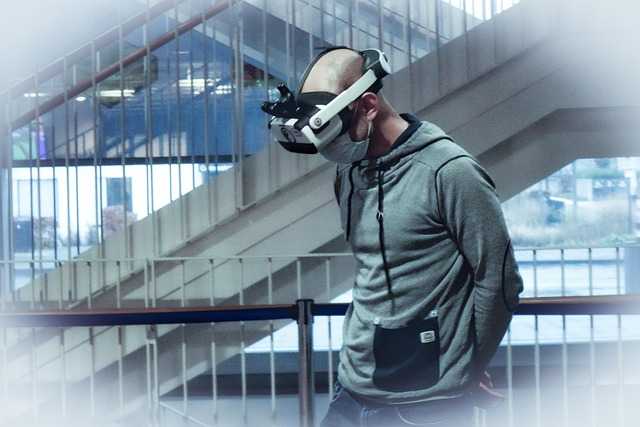As a passionate gamer, I’ve witnessed the evolution of gaming technology firsthand. The rise of cloud gaming has sparked a revolution in how we experience our favorite titles, challenging the dominance of traditional consoles. In this article, I’ll delve into the impact of cloud gaming on traditional consoles through a comparative analysis, exploring the strengths and weaknesses of each platform.
With cloud gaming services like Google Stadia and Microsoft xCloud gaining momentum, the landscape of gaming is undergoing a profound shift. The convenience of streaming games directly to any device versus the reliability of dedicated hardware raises intriguing questions about the future of gaming. Join me as we navigate the complexities of this gaming rivalry and uncover the implications for both gamers and industry giants.
Understanding Cloud Gaming and Traditional Consoles
I’ll begin by explaining What Cloud Gaming Is and then delve into The Evolution of Traditional Consoles to provide a comprehensive overview.
What Cloud Gaming Is
Cloud gaming refers to the technology that allows players to stream games directly from remote servers to their devices instead of downloading or running them on local hardware. Cloud gaming offers the flexibility to play games on various devices without the need for high-end hardware, as the games are processed on powerful servers and streamed to the player’s device. This technology is revolutionizing the gaming industry by removing the limitations of device specifications and allowing gamers to access high-quality games on the go.
The Evolution of Traditional Consoles
Traditional consoles have evolved significantly over the years, from bulky machines with limited capabilities to sleek, powerful devices that can deliver immersive gaming experiences. These consoles have been a staple in the gaming industry for decades, offering a dedicated platform for gamers to enjoy their favorite titles without worrying about hardware compatibility issues. However, with the rise of cloud gaming services, traditional consoles are facing stiff competition as players now have the option to access a vast library of games without owning a physical console.
By understanding the fundamental differences between cloud gaming and traditional consoles, players can make informed decisions about their gaming preferences and adapt to the changing landscape of the gaming industry.
Key Factors Driving the Rise of Cloud Gaming
As I delve deeper into the impact of cloud gaming on traditional consoles, two key factors emerge as major drivers shaping this transformative landscape.
Technological Advancements
Exploring the realm of technological advancements, cloud gaming leverages the power of high-speed internet connections to deliver seamless gaming experiences to players worldwide. By offloading the burden of processing and rendering to remote servers, cloud gaming eliminates the need for expensive hardware upgrades, offering gamers access to cutting-edge graphics and gameplay on a variety of devices. The advancements in cloud infrastructure, such as increased server capacity and reduced latency, ensure a smooth gaming experience, fostering the growth of this innovative gaming platform.
Changes in Consumer Behavior
Analyzing consumer behavior reveals a significant shift towards convenience and accessibility in the gaming industry. With cloud gaming, players no longer face constraints related to storage space or hardware compatibility, as games are directly streamed to their devices. This shift aligns with the modern consumer’s preference for on-demand services that provide flexibility and mobility. The rise of subscription-based models in cloud gaming further underscores this change, offering a cost-effective alternative to traditional console ownership. As consumers prioritize convenience and versatility in their gaming experiences, the allure of cloud gaming continues to gain momentum in the competitive gaming market.
Comparative Analysis of Cloud Gaming and Traditional Consoles
In comparing cloud gaming with traditional consoles, it’s evident that performance and accessibility, as well as cost and revenue models, play crucial roles in understanding the impact of these gaming platforms.
Performance and Accessibility
Cloud gaming services like Google Stadia and Microsoft xCloud offer high performance by leveraging remote servers for processing, enabling seamless gaming experiences. This offloading of processing tasks reduces the burden on local hardware, leading to smoother gameplay even on less powerful devices. On the other hand, traditional consoles rely on their internal hardware for processing, limiting performance to the specifications of the console itself. While consoles may offer consistent performance, cloud gaming provides the flexibility to access games on various devices without the need for specific hardware requirements. This accessibility allows gamers to enjoy their favorite titles anywhere, anytime, as long as they have a stable internet connection.
Cost and Revenue Models
When considering the cost and revenue models of cloud gaming versus traditional consoles, a significant difference lies in ownership and subscription-based services. Traditional consoles require an upfront investment in hardware, games, and accessories, making it a substantial initial cost for gamers. In contrast, cloud gaming services often operate on subscription-based models, where users pay a monthly fee for access to a library of games. This model offers gamers the flexibility to try various titles without the need to purchase each game individually. Additionally, cloud gaming subscriptions eliminate the need for constant hardware upgrades typically associated with traditional consoles, as the processing power is handled by remote servers. From a revenue standpoint, cloud gaming services benefit from recurring subscription fees, ensuring a steady income stream. On the contrary, traditional console manufacturers rely on hardware and game sales for revenue, which may fluctuate based on market demand and competition.
Impact of Cloud Gaming on the Console Market

Cloud gaming has revolutionized the gaming industry, with notable effects on console sales and game development and distribution.
Effects on Console Sales
Cloud gaming services have introduced a new dimension to the gaming landscape, impacting traditional console sales significantly. The convenience and accessibility offered by cloud gaming have led to a shift in consumer preferences. Individuals are increasingly drawn to the flexibility of playing games on multiple devices without the need for dedicated hardware. As a result, traditional console manufacturers are facing challenges in maintaining sales figures as cloud gaming gains traction. The rise of cloud gaming services has forced console companies to reevaluate their strategies to remain competitive in the evolving market.
Shifts in Game Development and Distribution
The emergence of cloud gaming has not only influenced how games are played but also how they are developed and distributed. Game developers are adapting to the changing landscape by focusing on creating titles that are compatible with cloud gaming platforms. This shift entails optimizing games for streaming capabilities and ensuring seamless gameplay across various devices. Moreover, cloud gaming has paved the way for innovative distribution models, enabling developers to reach a broader audience through subscription-based services. As a result, the traditional model of purchasing physical or digital copies of games is gradually evolving towards a more service-oriented approach. The increased emphasis on cloud gaming has prompted developers to explore new ways of engaging with players and delivering immersive gaming experiences in a dynamic market environment.
Future Trends in Gaming
As we look ahead, there are key predictions shaping the landscape of gaming, with both cloud gaming and console gaming experiencing significant transformations.
- Predictions for Cloud Gaming
In the realm of cloud gaming, the future holds exciting advancements. With the growing demand for seamless and accessible gaming experiences, we anticipate a surge in cloud gaming services. The expansion of 5G networks will further enhance streaming capabilities, allowing for smoother gameplay and reduced latency. Moreover, increased collaboration between cloud gaming providers and game developers will lead to a more extensive library of titles optimized for streaming, catering to diverse player preferences. These developments are set to revolutionize how gamers access and enjoy their favorite games, making on-the-go and cross-platform gaming more prevalent than ever. - Predictions for Console Gaming
On the console gaming front, we foresee a strategic evolution to meet changing consumer behaviors and technological trends. Console manufacturers are likely to focus on integrating cloud gaming features into their platforms to offer hybrid gaming experiences combining the benefits of local hardware and cloud streaming. This shift will blur the lines between traditional consoles and cloud gaming services, providing users with flexibility and choice in how they play. Additionally, the upcoming generation of consoles will emphasize cross-play compatibility and seamless transitions between devices, enabling players to continue their gaming sessions effortlessly across different platforms. This convergence of console and cloud gaming ecosystems will shape the future of gaming, offering diverse and interconnected experiences to players worldwide.

About the author:
Edwin Ledouxonn, the visionary founder of Your Gaming Colony, has transformed the platform into a premier destination for gaming enthusiasts. His passion for video games and commitment to the gaming community are evident in every aspect of the site. Edwin’s deep understanding of the gaming world has allowed him to create a comprehensive and engaging platform that caters to the diverse needs of gamers.




